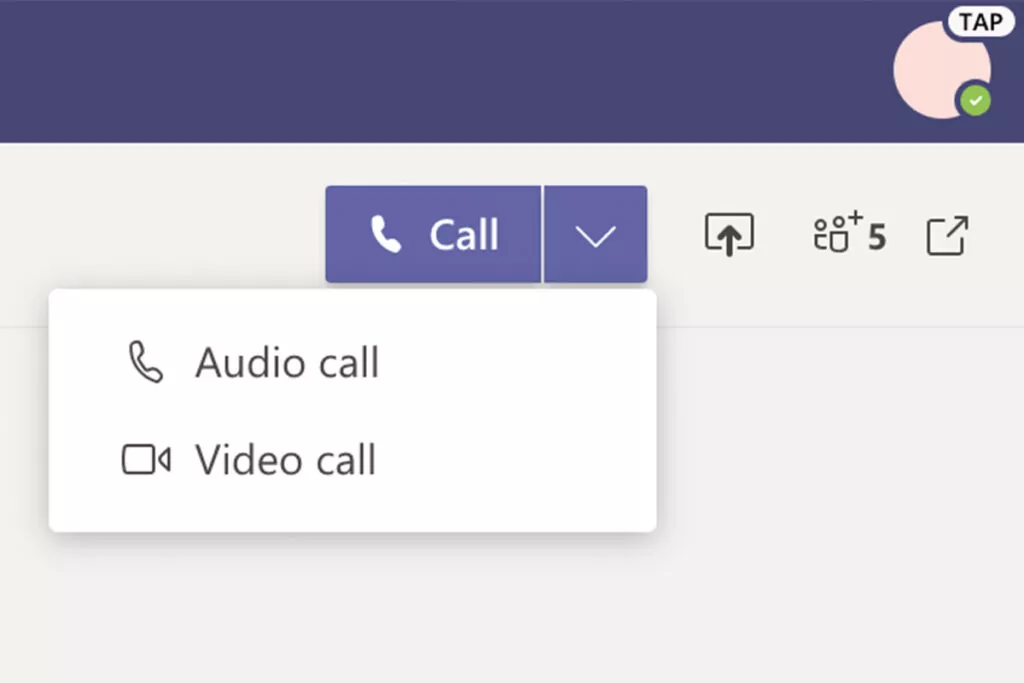Microsoft Teams Calling allows users to make and receive calls. While Teams is primarily viewed as an internal communications and messaging tool, Microsoft developed a way to convert Teams into a business phone system. By adding voice and PBX capabilities to Teams, users can make and receive outbound and inbound calls while also combining meetings, chat and more, for a true unified communications solution. So how does Microsoft Teams Calling work?
What is Teams Calling?
Previously, employees within a business or organisation could easily call each other from Teams without a phone number. Now, with Teams Calling combined with a cloud-based phone system, employees can make work calls from wherever they are while using their work number.
Teams supports the ability to make VoIP calls from Teams user to user. There are two options that enables users to make, receive and transfer calls in Teams, to and from landlines and mobiles on the PSTN. To be able to make phone calls and take advantage of call functionalities in Teams, you need a phone system licence, a phone number and PSTN connectivity. To get a phone number and PSTN connectivity, you can either choose a Microsoft Calling plan or take advantage Direct Routing.
Microsoft Calling Plans
A Microsoft Calling Plan is an add-on telephone service that when combined with a phone system becomes the voice solution for your business. Microsoft offers calling plans as a per-user license and provides users a way to make and receive phone calls, including a primary phone number, minute bundles and PSTN services. Microsoft offers both Domestic and International Calling Plans and are sold per plan and per country.
Maintained by Microsoft in the cloud, these plans turn Teams into a ‘light-touch’ hosted PBX. All service is provided directly from Microsoft via Office 365 – something different from Direct Routing which allows you to use a third-party carrier. The Calling Plans option can be quite expensive and is only available in select countries, which is why many organisations are turning to Direct Routing.
Direct Routing
Direct Routing is the process of routing Teams to the PSTN using a Session Border Controller (SBC) and SIP Trunks. Direct Routing enables you to bring your own telephone service to Teams and connect Teams to a range of telephony providers (like us). This option allows you to take advantage of cheaper call rates while also providing a more flexible and supportive service. This is an attractive option for many businesses as you can choose your own telephony provider while retaining a verified integration with the Teams platform.

Tutorial: How to make and receive calls in Teams
Starting a call in Teams is extremely simple and can be done in multiple ways, much like on a mobile phone. For example, you can make and receive a call from a chat, the command bar and calls tab – essentially anywhere in Teams.
How to call from a chat
Whether you’re in a chat with one person or multiple people, you can call them by clicking the call icon in the top right corner. Using the drop down next to the call icon, you can decide whether to make an audio or video call. When you call someone, their Teams devices – like laptops, mobile phones or any device where the Teams app has been installed – will ring and they can answer or decline. During the call you can quickly and easily turn the camera or mic on and off, as well as invite other people to the call and send links and files over the chat.
How to call from the calls tab
The calls tab is found on the left-hand side of the Teams platform – unsurprisingly, under ‘Calls’. Once you click that, you can make calls using speed dial and by going through your contacts list. On speed dial, you can add specific contacts to it and quickly type in a name, phone number or email address.
How to call from the command bar
In the search bar, type in a back slash (/). This tells Teams that you’re giving it a command and it will give you options, like /activity or /calls. When you pick /calls, hit enter and you’ll be prompted to type the name or email of the person you want to call, and the call will go through.
What are the benefits of Teams Calling for my business?
Adopting the Teams platform as a business PBX and using its calling features is an extremely beneficial service for any business. In terms of ease, the act of making and receiving phone calls is extremely simple while also being able to move seamlessly between chat, calls and meetings. It’s a professional system and allows you to use your business phone number while away from the office.
During this time of remote working, voice and video calls from communication platforms like Teams have risen significantly. Keeping a consistent business number and presence gives a professional look while also reassuring clients and customers. Teams enables this to happen.
By adding voice to Teams, your business is unifying communications and creating a single system for all communications in one device. Rather than introducing and running multiple different systems, installing one system to manage all these aspects gives you a smoother and integrated interface while also saving money, time and maintenance.
Calling in Teams supports basic phone system features, such as call forwarding, transferring, queues and holding, simultaneous ringing, call history, voicemail and emergency calling. When voice is added by Direct Routing, you’re adding PBX capabilities to Teams. Organisations have the opportunity to combine meetings, chat, file management and collaboration with outbound and inbound calling, creating true unified communications.
Start making calls in Teams
Turn your Microsoft Teams platform into your business PBX and start making and receiving calls with Direct Routing.


